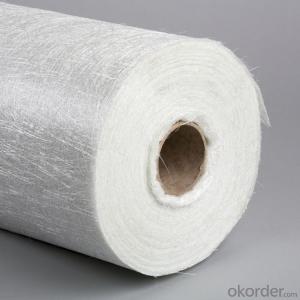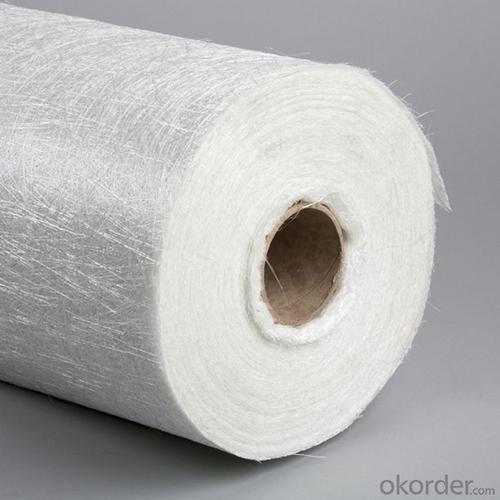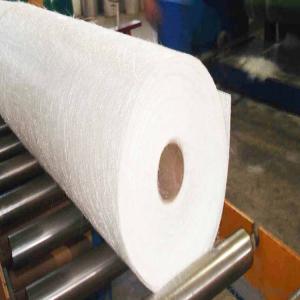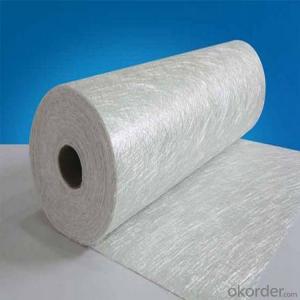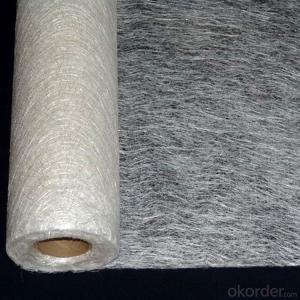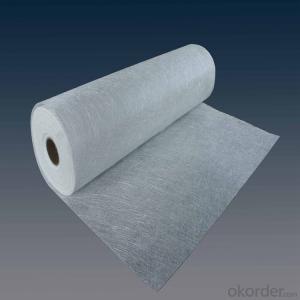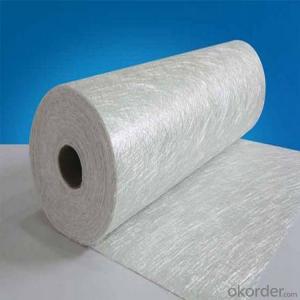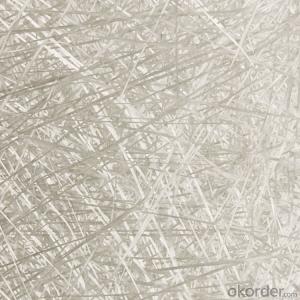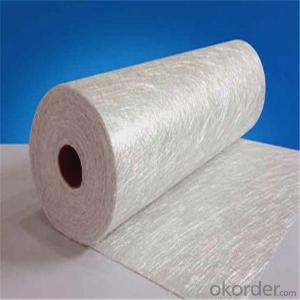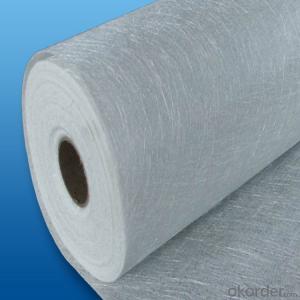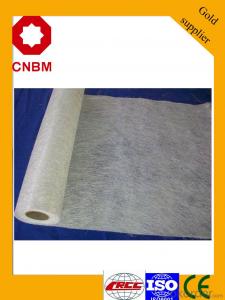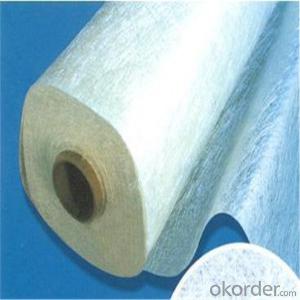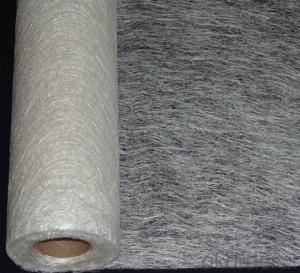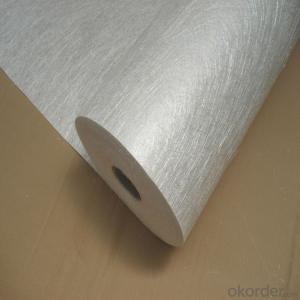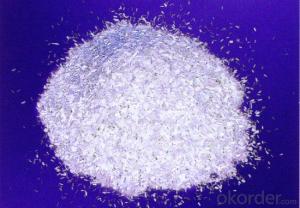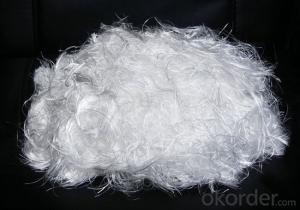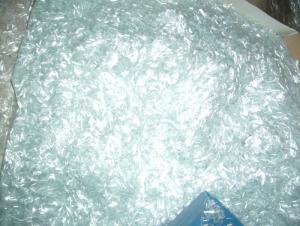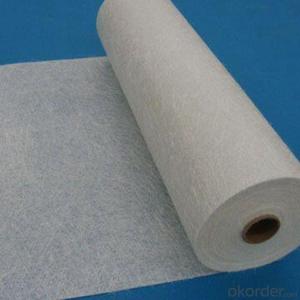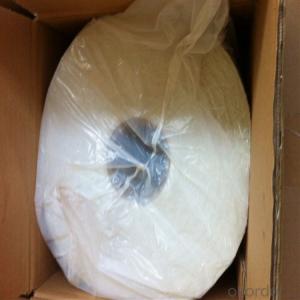100g/m2 Fiberglass Chopped Strand Mat
- Loading Port:
- China main port
- Payment Terms:
- TT OR LC
- Min Order Qty:
- 1 kg
- Supply Capability:
- 5000 kg/month
OKorder Service Pledge
OKorder Financial Service
You Might Also Like
Product Description:
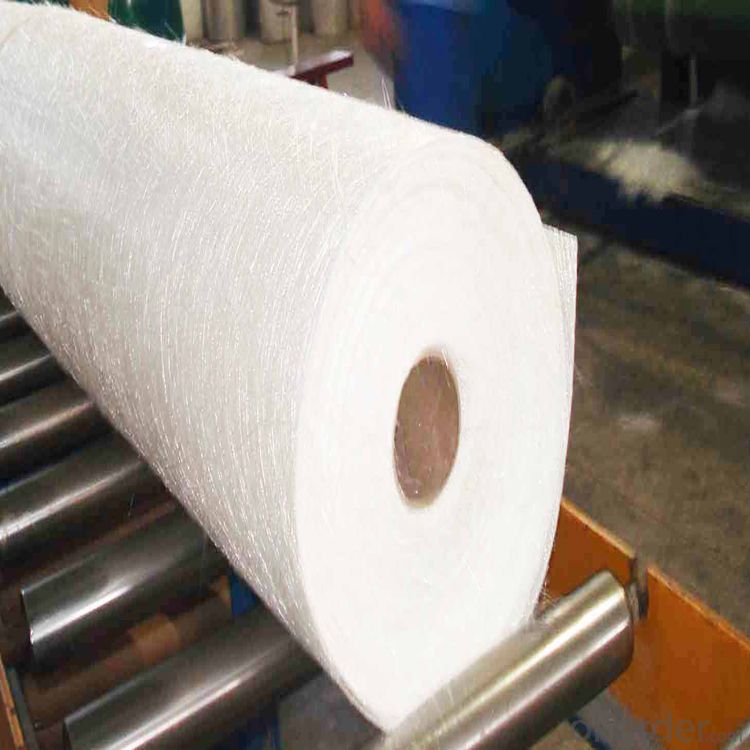
Surfacing Tissue mainly used in the surface layers of FRP products. It features even Fiber distribution, soft feel, level and smooth fiber surface, less glue content, quick resin soak and good pattern fitness. It can improve the product surface property on corrosion resistance, compressive strength, seepage resistance, and longer service life. It is also suitable for spraying; pattern pressing and other FRP pattern technology.
Surfacing Tissue mainly used in the surface layers of FRP products. It features even Fiber distribution, soft feel, level and smooth fiber surface, less glue content, quick resin soak and good pattern fitness. It can improve the product surface property on corrosion resistance, compressive strength, seepage resistance, and longer service life. It is also suitable for spraying; pattern pressing and other FRP pattern technology.
Product Features:
Fast breakdown in styrene
Fiber dispersed evenly
Low binder content
Superior acid corrosion resistance
Specifications:
Item | Over Density | Moisture Content | Chop Density | Polyester Yarn | Width |
(g/m2) | (%) | (g/m2) | (g/m2) | (mm) | |
EMK300 | 309.5 | ≤0.15 | 300 | 9.5 | 50-3300 |
EMK380 | 399 | 380 | 19 | ||
EMK450 | 459.5 | 450 | 9.5 | ||
EMK450 | 469 | 450 | 19 | ||
EMC0020 | 620.9 | 601.9 | 19 | ||
EMC0030 | 909.5 | 900 | 9.5 |
Product Packaging:
Each Surface Tissue is wound onto a paper tube which has an inside diameter of 76mm and the mat roll has a diameter of 330mm. The mat roll is wrapped up with plastic film,and then packed in a cardboard box or wrapped up with kraft paper. The rolls can be vertically or horizontally placed. For transportation, the rolls can be loaded into a cantainer directly or on pallets.
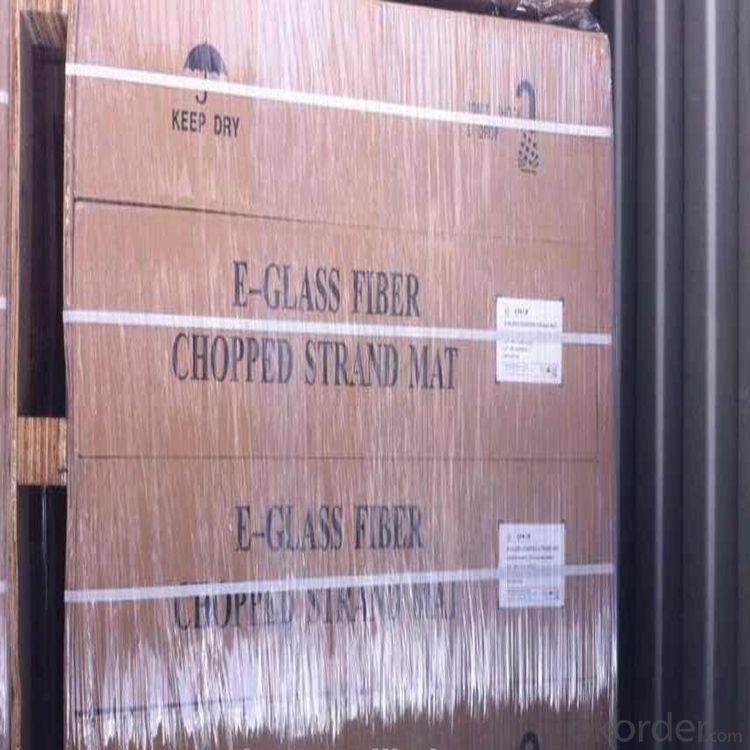
Product Storage:
Unless otherwise specified, Chopped Strand Mat should be stored in a dry, cool and rain-proof area. It is recommended that the room temperature and humidity should be always maintained at 15℃~35℃ and 50%~75% respectively.
Company Information
CNBM (China National Building Material) Group is the largest comprehensive building materials group in China that in integrate scientific research, manufacturing and logistics into one entity. The largest building materials and equipment specialists in China. Upon State Council approval, today CNBM owned more than 300 subordinate manufacturing factories and servicing companies. There are 6 fully owned public listed companies and 11 partially owned with substantial shares public listed companies. In many of these fields, CNBM is playing the leading role in the building industry in the country.
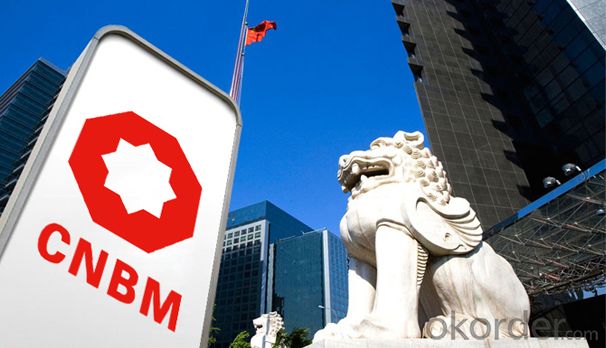
- Q: Can fiberglass chopped strand be used in the production of aerospace structures?
- Yes, fiberglass chopped strand can be used in the production of aerospace structures. It is commonly used as a reinforcement material in composite materials for various aerospace applications, including aircraft parts and components. The high strength-to-weight ratio and excellent mechanical properties of fiberglass make it suitable for enhancing the structural integrity and performance of aerospace structures.
- Q: Can fiberglass chopped strand be used for reinforcing ceramic materials?
- Indeed, fiberglass chopped strand can be utilized to reinforce ceramic materials. Comprising of small strands of glass fibers typically measuring 1-3 inches in length, this fiberglass chopped strand can be incorporated into ceramic materials like clay or porcelain to bolster them and enhance their mechanical properties. When integrated into ceramic materials, the fiberglass chopped strand functions as a reinforcement phase, augmenting the strength, toughness, and resistance to cracking of the ceramic matrix. The fibers effectively distribute stress throughout the material, impeding crack propagation and elevating its overall durability. Additionally, the thermal expansion coefficient of fiberglass closely resembles that of ceramics compared to alternative reinforcing materials like steel or carbon fibers. This implies that when the ceramic material expands or contracts due to temperature fluctuations, the fiberglass reinforcement will likewise expand or contract at a similar pace, thereby minimizing the likelihood of delamination or damage to the composite structure. In conclusion, the utilization of fiberglass chopped strand as a reinforcement in ceramic materials can substantially enhance their performance and prolong their lifespan in diverse applications, encompassing aerospace, automotive, and construction industries.
- Q: Is fiberglass chopped strand resistant to fire?
- Yes, fiberglass chopped strand is resistant to fire. This is because fiberglass is made from spun glass fibers that are then coated with a fire-resistant resin. These fibers have a high melting point and are non-combustible, meaning they do not easily catch fire or spread flames. Additionally, fiberglass has a low thermal conductivity, which means it does not conduct heat well, further reducing its flammability. As a result, fiberglass chopped strand is often used in applications where fire resistance is required, such as in building materials, insulation, and protective clothing. However, it is important to note that while fiberglass is resistant to fire, it can still be damaged or weakened by prolonged exposure to high temperatures.
- Q: Is fiberglass chopped strand suitable for aerospace interior components?
- Indeed, aerospace interior components can be made from fiberglass chopped strand, which is a suitable material. Fiberglass, a lightweight and durable substance, possesses an excellent strength-to-weight ratio, making it an ideal choice for aerospace applications. The manufacturing of interior components, such as panels, partitions, and cabin linings, frequently involves the utilization of chopped strand fiberglass. This material offers good mechanical properties, including high tensile strength and impact resistance, which are crucial for ensuring the safety and performance of aerospace interiors. Furthermore, fiberglass is fire-resistant and capable of meeting the stringent fire safety requirements of the aerospace industry. Consequently, fiberglass chopped strand is a dependable and widely utilized material for aerospace interior components.
- Q: Is fiberglass chopped strand compatible with other reinforcement materials?
- Yes, fiberglass chopped strand is compatible with other reinforcement materials. It can be combined with other materials such as carbon fiber, Kevlar, or natural fibers to create hybrid composites with enhanced mechanical properties. The combination of different reinforcement materials can lead to improved strength, stiffness, and impact resistance in the final composite product. Additionally, fiberglass chopped strand can also be used in conjunction with thermoplastic or thermosetting resins to create composite materials that are suitable for various applications in industries such as automotive, aerospace, construction, and marine.
- Q: Is fiberglass chopped strand suitable for applications requiring UV resistance?
- UV resistance is generally not suitable for applications requiring fiberglass chopped strand. Although fiberglass is strong and durable, the chopped strands used in certain applications may lack the necessary UV stabilizers or protective coatings. If fiberglass chopped strand does not have proper UV resistance, it can degrade and become brittle when exposed to sunlight and other UV sources. This degradation can cause discoloration, loss of mechanical properties, and ultimately failure of the material in UV-exposed applications. Therefore, if your specific application requires UV resistance, it is important to consider alternative materials or additives.
- Q: What are the advantages of using fiberglass chopped strand in construction?
- There are several advantages of using fiberglass chopped strand in construction. Firstly, fiberglass is highly versatile and can be molded into various shapes and sizes, allowing for flexibility in design and construction. It is also lightweight, making it easier to handle and transport. Additionally, fiberglass is known for its high tensile strength, providing structural integrity and durability to the finished product. It is resistant to corrosion, rot, and pests, making it a long-lasting material. Furthermore, fiberglass offers excellent insulation properties, both thermal and acoustic, enhancing energy efficiency and providing a comfortable living or working environment. Overall, the use of fiberglass chopped strand in construction offers numerous benefits, making it a popular choice among builders and architects.
- Q: Is fiberglass chopped strand suitable for the production of automotive spoilers?
- Indeed, fiberglass chopped strand proves to be a fitting option for the manufacturing of automotive spoilers. Widely utilized in the automotive industry for various components, including spoilers, fiberglass serves as a lightweight and long-lasting material. The chopped strand variant of fiberglass comprises short, randomly oriented fibers bound together by a binder. This configuration facilitates the effortless handling and molding of the material during the production process. Automotive spoilers, designed to enhance vehicle aerodynamics by improving stability and reducing drag, benefit from the exceptional strength-to-weight ratio offered by fiberglass chopped strand. This quality makes it an ideal choice for spoilers. The material's high tensile strength and impact resistance ensure that the spoiler can endure the forces and stresses encountered while driving. Moreover, fiberglass chopped strand can be conveniently molded into intricate shapes, enabling the production of spoilers with elaborate designs. The material can also be effortlessly painted and finished to match the vehicle's aesthetics. In conclusion, due to its lightweight nature, durability, and versatility in molding and finishing, fiberglass chopped strand emerges as a fitting material for the production of automotive spoilers.
- Q: Can fiberglass chopped strand be used in the production of insulation blankets?
- Yes, fiberglass chopped strand can be used in the production of insulation blankets. It is a common material choice due to its excellent thermal insulation properties and its ability to withstand high temperatures. The chopped strands are typically layered and compressed to create a dense and effective insulation blanket.
- Q: What is short cut fiber? What's the nature of it?
- Scope of application:Mainly used for reinforced thermoplastics. Because it has good performance, especially for reinforced material and resin composite used in automobile, train, ship body: for high temperature resistant needle felt, automobile sound piece, hot rolled steel. Its products are widely used in the field of automobile, aviation building, daily necessities, typical products auto parts, electronic products, mechanical products. Can also be used to enhance the inorganic fiber excellent mortar concrete anti cracking, and substitute polyester fibers, lignin fiber reinforced mortar for concrete very competitive products, but also can improve the high temperature stability of asphalt concrete, low temperature crack resistance and fatigue resistance and prolong the use of road surface life.
Send your message to us
100g/m2 Fiberglass Chopped Strand Mat
- Loading Port:
- China main port
- Payment Terms:
- TT OR LC
- Min Order Qty:
- 1 kg
- Supply Capability:
- 5000 kg/month
OKorder Service Pledge
OKorder Financial Service
Similar products
Hot products
Hot Searches
Related keywords
